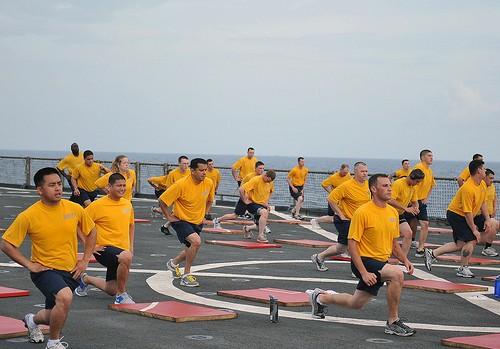
Lunges - A Classic For a Reason, Building Strong Hips and Thighs
Lunges are harder than they first appear. Lunging forwards puts pressure on the rear of the pushing leg and the quads and foot and ankle muscles of the landing leg, while lunging backwards requires the quads to contract from a 'standing start,' which increases the strain on the muscles and consequently makes the exercise more effective. To get the most out of your lunges, keep them low enough that your front thigh is parallel with the ground, and while your front knee will creep forward, don't let it get over your toes. Do some slow lunges every time you do lunges, to work on your form. look out for issues like: - One hip higher than the other - Front knee too far forward - One hip forward and the other back - Leaning forward As you get stronger, your lunge will improve.
- Important notification about information and brand names used in this slideshow!
- Photo courtesy of Commander, U.S. 7th Fleet by Flickr : www.flickr.com/photos/us7thfleet/8092291993/
- exercise.about.com/library/blquicktotal.htm

Hover Squats For A New Dimension in Leg Training
Hover squats work your hips, glutes and quads, but they especially have a reputation as glute shredders. To perform a hover squat, select a flat, stable surface about the height of your knees. If it's too high you won't get full glute engagement. you can start standing or sitting, but either way, you're going to enter the bottom of a squat, 'hover' by rising and falling a couple of inches at most for a rep count (say, 8 reps) and then stand, before repeating. Don't do these too often - shearing force on the knee in squats is at its strongest when your thighs are about parallel to the floor, which is the depth that your glutes really kick in, so you don't want to wear your knees out by doing these every day. They are, like all squats, a great metabolic conditioning tool though.
- Important notification about information and brand names used in this slideshow!
- Photo courtesy of lululemon athletica by Flickr : www.flickr.com/photos/lululemonathletica/4155742812/
- exercise.about.com/library/blquicktotal.htm

The Deadlift - A Workout All By Itself, and the Key to Fast Strength Development
The deadlift is one of the most intense and neurologically demanding movements there is. It's most lifters' strongest lift and it tends to suit tall people better than squats. For metabolic effects, anabolic results, nervous system involvement and functional fitness the deadlift is hard to beat. Despite the simplicity of this movement - you pick up the barbell, then put it down - acres of print have been written discussing deadlift form. But here's where to start: Stand with your feet about shoulder width apart, with the barbell almost touching your shins. Hinge at the hips and grasp the bar, with one palm facing you and the other away from you, in a shoulder-width grip. Now, lower your hips and pull the bar towards you and then upwards, keeping a strong arch in your back and letting your arms stay loose like ropes. Extend your hips and retract your shoulders at the top, and return the bar to the floor by doing the same thing in reverse.
- Important notification about information and brand names used in this slideshow!
- Photo courtesy of Ben Warren by Flickr : www.flickr.com/photos/benwarren/4381224704/
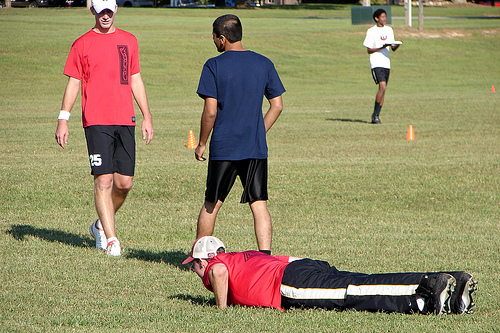
Push-Ups for Strength, Conditioning, Even Posture!
Push-ups are a great strength exercise. The can be done anywhere and since they involve a significant resistance - about 66% of your bodyweight - and lots of different muscle groups, push-ups are a good all-round health and strength builder. Try doing them during odd moments at work or building them into your lunch break or morning and evening routines. Remember to keep your chest inflated, your shoulders back, your body straight and your hands under your shoulders with the fingers facing forwards to get the best from your push-ups without injuring yourself. Hold your neck in neutral - don't try to peck the floor! Fewer push-ups with better form is better than cranking out lots of poor quality reps.
- Important notification about information and brand names used in this slideshow!
- Photo courtesy of popofatticus by Flickr : www.flickr.com/photos/barretthall/2878762177/
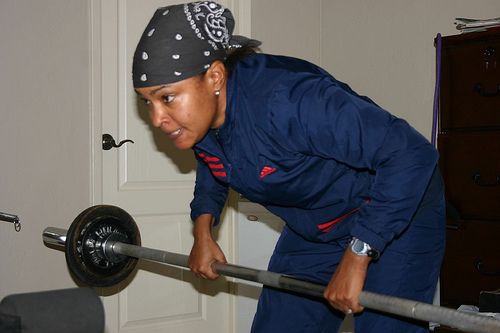
Barbell Rows -The Upper back Builder of Champions
Barbell rows are a great way to build strength in your legs, back and shoulders as well as your arms. Because they give you so much 'bang for your buck,' they're a perennial favorite in the weights room with both bodybuilders and sportsmen and women. Here's how it's done: Deadlift the barbell or set it up on pins or a rack. Bend at the hips - not the waist, your low back should be arched strongly throughout. Inflate your chest and grip the barbell with your palms down, and pull the bar to your body. Try to lean forward at least 45º - the steeper your lean the more of your upper back is getting a workout. Lower the bar to arms' length and repeat.
- Important notification about information and brand names used in this slideshow!
- Photo courtesy of dr.coop by Flickr : www.flickr.com/photos/professorcooper/2283969077/
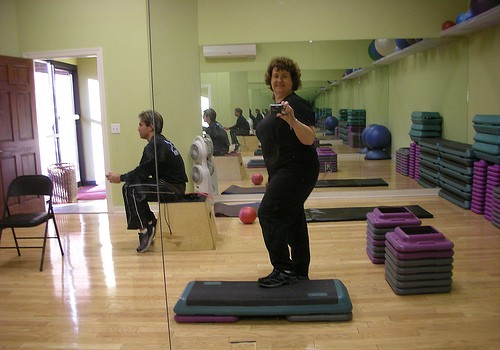
Step-Ups Are a Great Tool For Building Strong Legs
Step-ups are one of those exercises that suffer by association - they're used in low-impact fitness and step aerobics classes, so people think they're ineffective. The truth is step ups can be a challenge for even advanced athletes. Start your step-ups by picking a relatively low step - lower than knee height - and learning how to take the rear leg out of the movement by fully extending it and taking the toes and bell of the foot off the ground before you step up. This turns a step-up from a kind of incline lunge into a challenging workout for the core and legs that's closer to being a one-leg squat.
- Important notification about information and brand names used in this slideshow!
- Photo courtesy of Judy Baxter by Flickr : www.flickr.com/photos/judybaxter/4266649281/
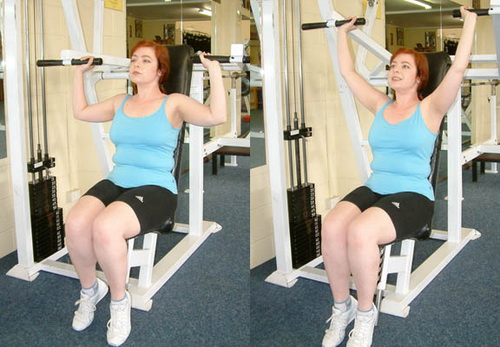
Overhead Press For Strong, Healthy Shoulders - and Major Core Involvement
The overhead press has drifted out of fashion since it was dropped from the Olympics in 1972. That's sad, because it's one of the most reliable ways to build strong, healthy shoulders. If you have great shoulder mobility, skip straight to 'how it's done.' If not, read the next paragraph too. Stand against a wall with your butt, heels and the back of your head against the wall. Now press he whole of your spine against the wall, and then your shoulders. Finally, raise your arms until they're level with your shoulders and the whole of the back of your arm is against the wall. Now push your arms overhead til they're straight - without taking your spine, or your arms, away from the wall. If you can't, don't start doing heavy overhead presses with a barbell yet. Instead, use dumbells and a light bar - or an empty one - to practice the form of the movement, and keep coming back to the wall drill til you master it. How it's done: Hold the barbell in a shoulder-width grip level with or just above your shoulders. Brace your core and tense your glutes, and push your elbows up and...
The overhead press has drifted out of fashion since it was dropped from the Olympics in 1972. That's sad, because it's one of the most reliable ways to build strong, healthy shoulders. If you have great shoulder mobility, skip straight to 'how it's done.' If not, read the next paragraph too. Stand against a wall with your butt, heels and the back of your head against the wall. Now press he whole of your spine against the wall, and then your shoulders. Finally, raise your arms until they're level with your shoulders and the whole of the back of your arm is against the wall. Now push your arms overhead til they're straight - without taking your spine, or your arms, away from the wall. If you can't, don't start doing heavy overhead presses with a barbell yet. Instead, use dumbells and a light bar - or an empty one - to practice the form of the movement, and keep coming back to the wall drill til you master it. How it's done: Hold the barbell in a shoulder-width grip level with or just above your shoulders. Brace your core and tense your glutes, and push your elbows up and slightly forward, leaning back only just enough to allow the bar to clear your face before getting back under the bar and driving it overhead with your upper back muscles. Lower the bar to its original position and repeat.
- Important notification about information and brand names used in this slideshow!
- Photo courtesy of GeorgeStepanek by Wikimedia Commons : commons.wikimedia.org/wiki/File:ShoulderPressMachineExercise.JPG
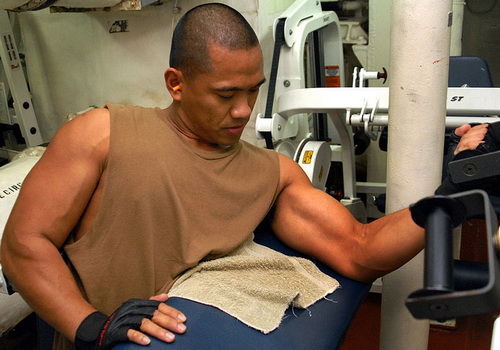
Biceps Curls - Not Just an Arm Exercise, They're For the Back and Shoulders Too
Biceps curls get a bad rap. And it's largely deserved. If you're doing sets of dumbell curls in between texting and looking at yourself in the mirror, you're the reason biceps curls have that reputation. But they can be a completely different lift: curls don't just use the biceps. If you curl a heavy barbell or a heavy dumbell, you're putting weight and strain on the muslces of your shoulders, upper back and your whole body is having to brace to support the load. Experiment - put a weight you can bench for 15 on the bar and do three sets of 6 curls with it. It won't just be your biceps that get sore - or that grow!
- Important notification about information and brand names used in this slideshow!
- Photo courtesy of U.S. Navy photo by Mass Communication Specialist 2nd Class Michael Hight by Wikimedia Commons : commons.wikimedia.org/wiki/File:US_Navy_080217-N-5476H-081_Store_Keeper_2nd_Class_Rafael_Alexander,_a_native_of_Honolulu,_Hawaii,_lift
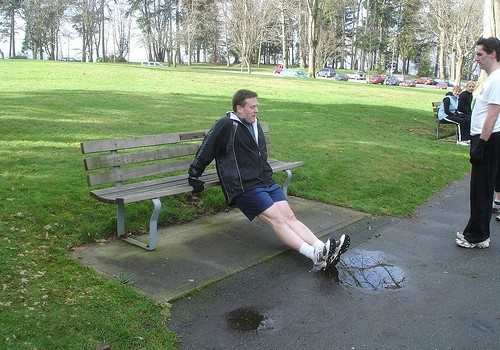
Tricep Dips For Upper Body Push Strength
Tricep dips are even more misnamed than bicep curls. Dips work the muscles of the upper back and shoulders as well as the triceps, and some variation of a dip, whether that's on a bench or a bar, parallel bars, rings, blast straps or two chairs, should be part of everyone's training routine. To perform a dip, try to find two surfaces that are about six inches wider than your hips and level. If you can do full dips, with your feet off the floor, great. If not, hinge at the hips and take the weight of our upper body on your hands. Lower yourself until your shoulders touch your hands, then drive your arms straight again.
- Important notification about information and brand names used in this slideshow!
- Photo courtesy of Raj Taneja by Flickr : www.flickr.com/photos/urbanmixer/87064628/
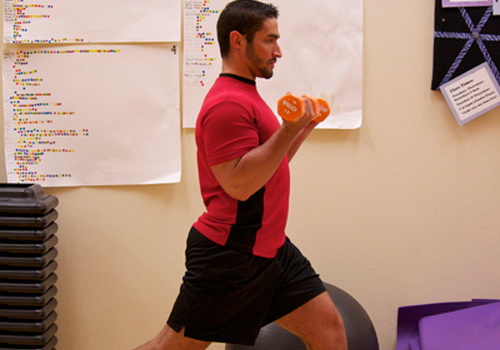
Combinations and Complexes - Build a Short, Intense Workout to Challenge Your Whole Body
Try using combinations of one or two lifts at once. Many simpler lifts are really advanced technical lifts broken into pieces, so doing overhead presses with a lunge will help prepare you for learning to split jerk, if you want to go down that route. But you can also combine lifts by doing them next to each other without stopping, in 'complexes' - circuits in which you do several lifts without putting the bar down. Try building three or four exercises into a compound and doing it for time rather than reps; You'll be amazed how long five minutes really is!
- Important notification about information and brand names used in this slideshow!
- Photo courtesy of Scott & White Healthcare by Flickr : www.flickr.com/photos/swhealthcare/5598191330/


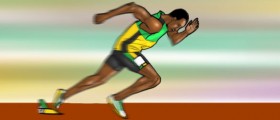
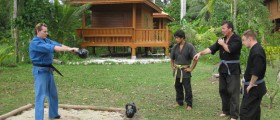
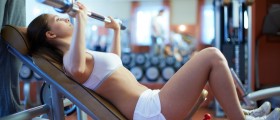
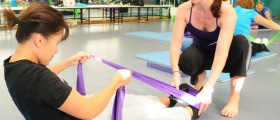
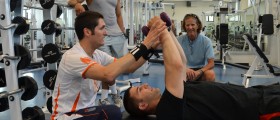

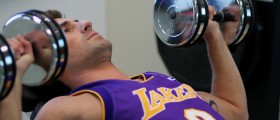
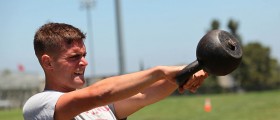
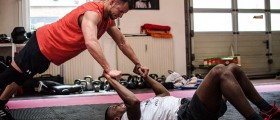
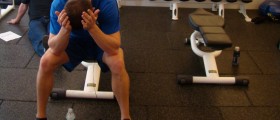
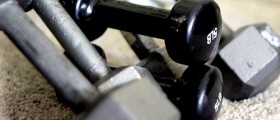
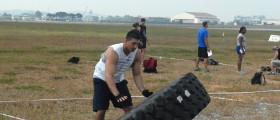
_f_280x120.jpg)
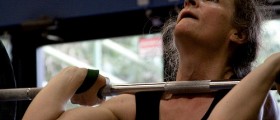
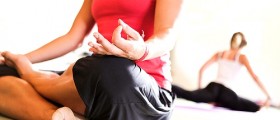
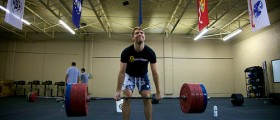
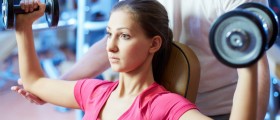

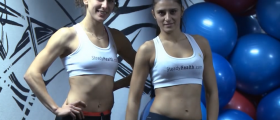
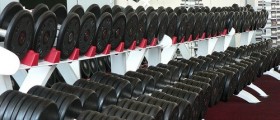
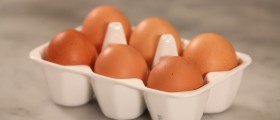
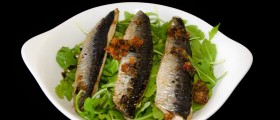
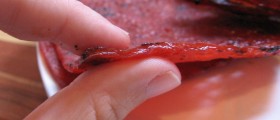
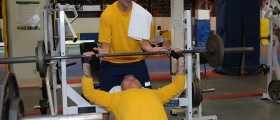
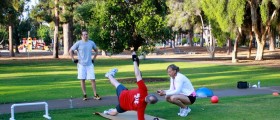
Your thoughts on this
Loading...